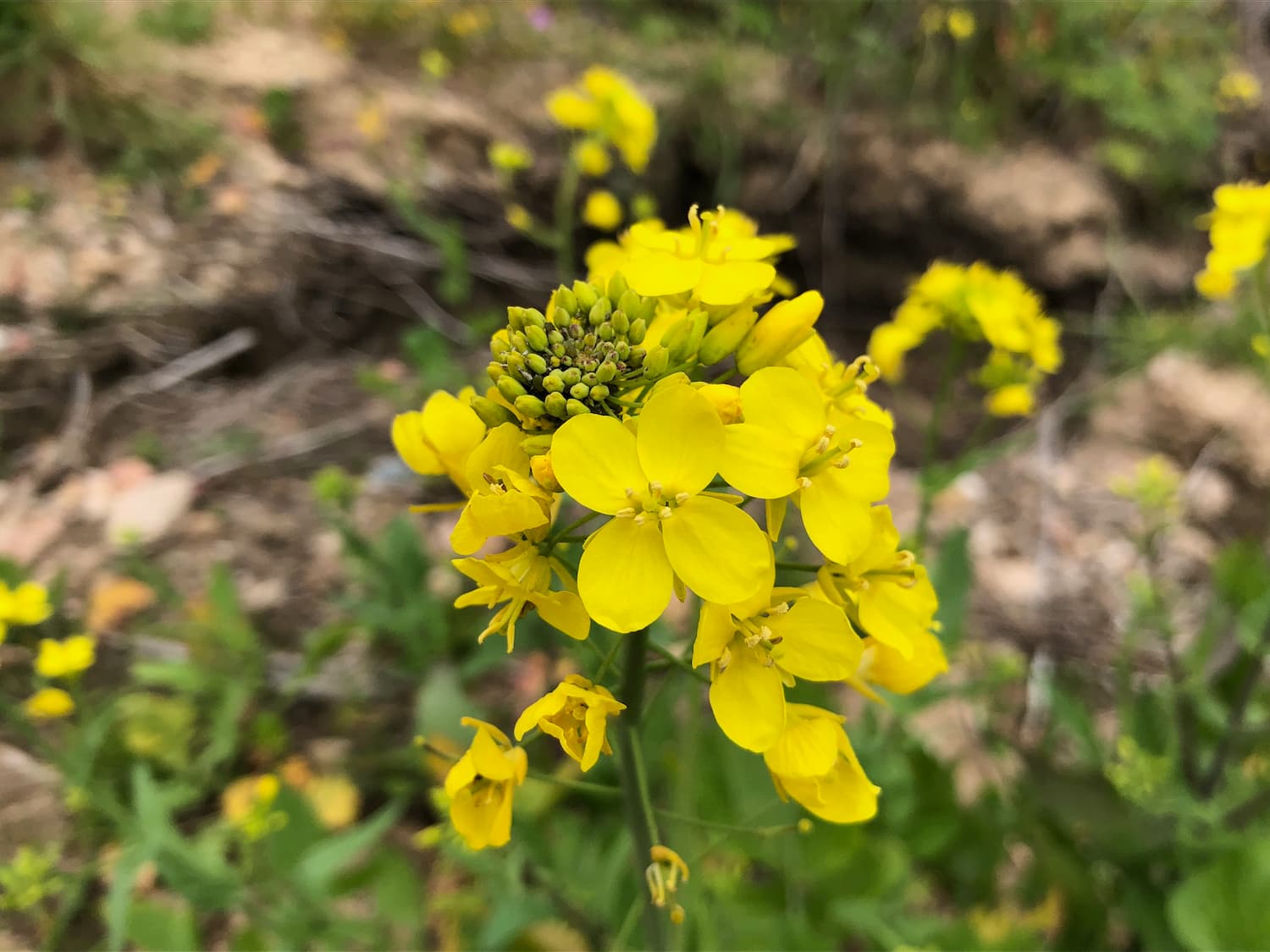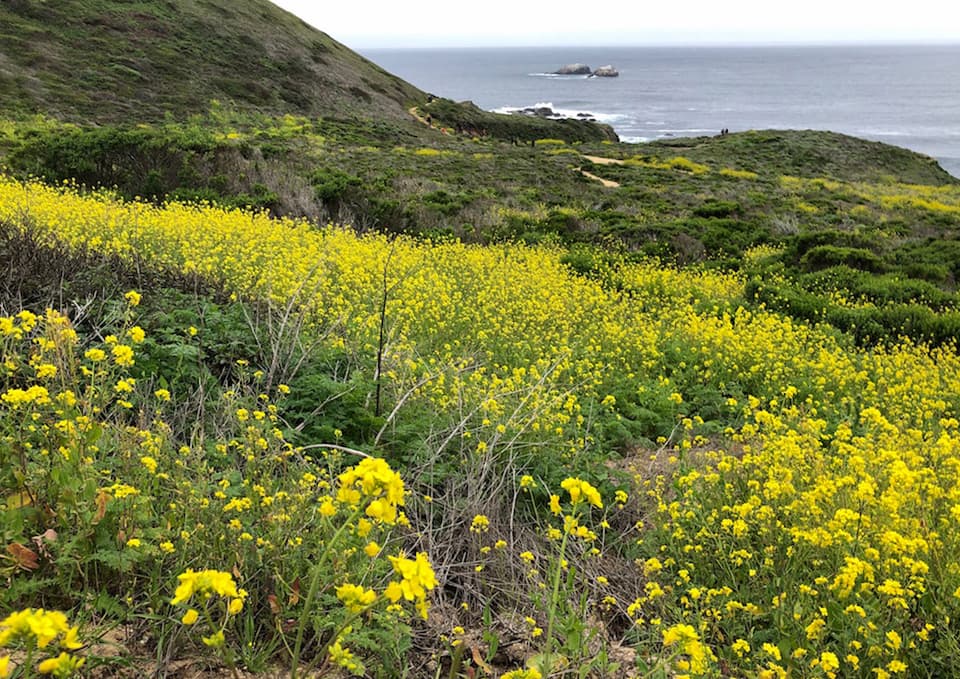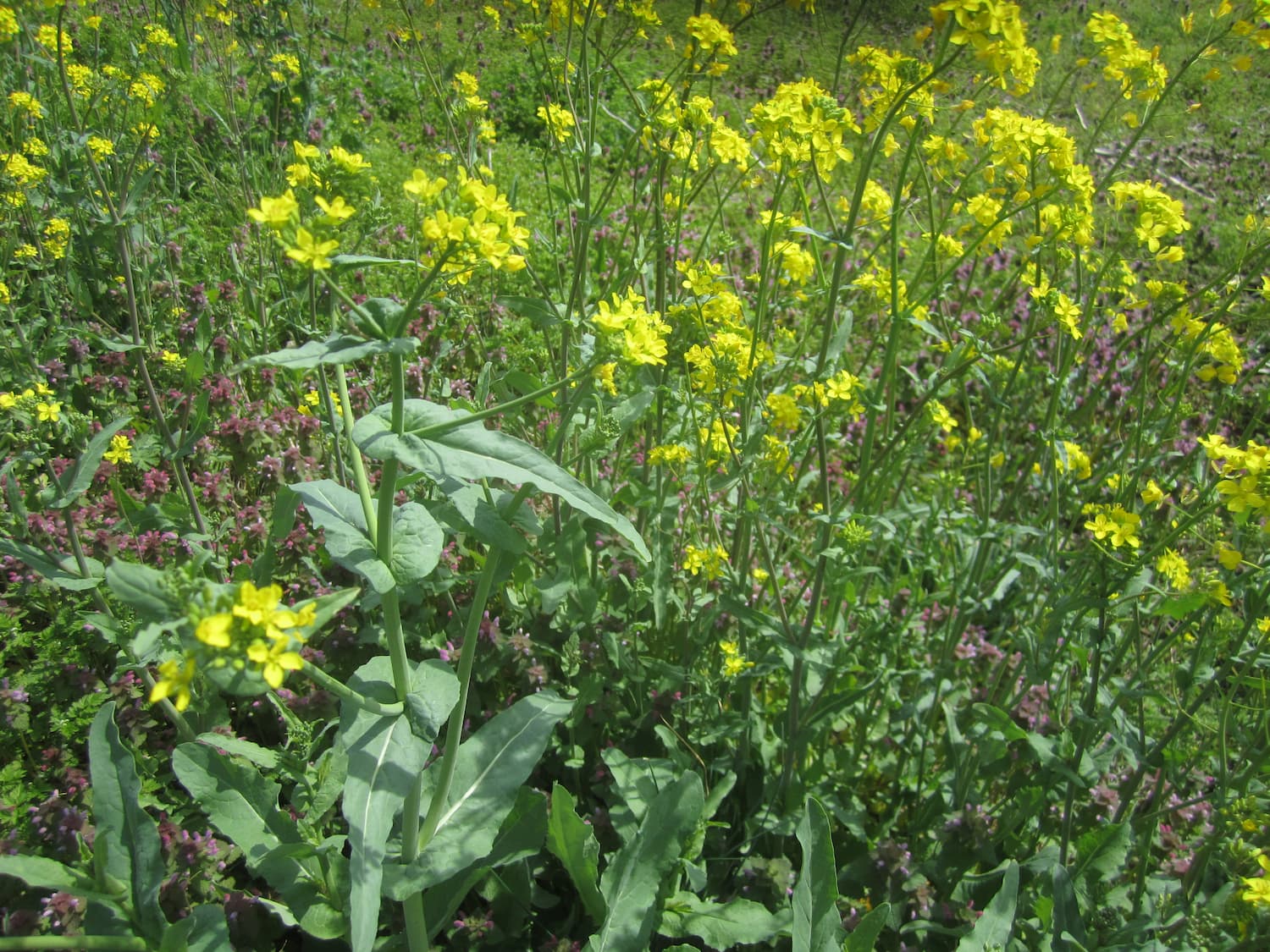How to Identify Wild Mustard — Foraging for Common Edible Weeds
- Authors
- Name
- Sam Sycamore
- @tanoaksam
- Published on
- Last updated
Taxonomy
Brassica rapa, Brassica nigra, others
also known as field mustard, black mustard, rape mustard
Brassicaceae (Brassica / Mustard) family
B. rapa is one of a few species we might call "the quintessential mustards" along with the closely related B. nigra (black mustard) and B. oleracea (whose cultivars include broccoli, cabbage, kale, collard greens, Brussels sprouts, and just about every other cruciferous vegetable). B. juncea (brown mustard) is also an important commercial crop, as is B. napus (rapeseed, canola).
B. rapa has been widely cultivated by humans as well, but its wild varieties are especially prolific in North America. There are so many unique offshoots of B. rapa that its taxonomy as a species is further subdivided into wild varieties and domesticated cultivars.
As foragers we are interested in the wild varieties, which are denoted as B. rapa var. rapa; B. rapa var. amplexicaulis; B. rapa var. dichotoma; B. rapa var. silvestris; and B. rapa var. trilocularis. It's not necessary to know which of these varieties you have, because they all share the same common traits with some slight variations.
Also of interest is the aforementioned black mustard, a once-domesticated species gone feral that shares B. rapa's cosmopolitan distribution. Foragers on the west coast may encounter the perennial Hirschfeldia incana (shortpod or hoary mustard), the only species in its genus, which was formerly classified as a Brassica species.
What is Wild Mustard?
Highly opportunistic herbaceous weed that thrives where human activity disturbs the soil. All parts are edible.

Characteristic four-petaled yellow flowers of wild mustard.
Key Characteristics
- broccoli-like flower buds
- yellow brassica flowers (4 petals, 6 stamens) in springtime
- leaves clasping around the stem (when flower stalk is present)
- silique seed pod with seeds attached to thin, translucent inner membrane (known as the replum)
Where to Find Wild Mustard
Anywhere humans go, wild mustard will follow right behind. At this point in time it has come to occupy every nook and cranny of North America, particularly in farm fields and along roadsides and walking trails.
B. rapa and many other foreign mustards are native to Europe, but are now so ubiquitous on this continent that they should pretty much all be considered "naturalized" here.
When to Look for Wild Mustard
If you've ever been out for a drive in the country in April or May and thought, "I wonder what all those little yellow flowers are?" chances are good that they were wild mustard.
All of the plant's parts can be harvested anytime they are found, but will be most conspicuous through the springtime when in bloom.
Though brassicas are typically biennials, wild mustard is a quick-growing opportunist that can function as an annual depending on when it germinates.
The typical biennial life cycle sees the plant germinating in fall, overwintering (and often dying back to its roots in colder climates), and then quickly bolting to produce flowers and seeds as soon as springtime arrives.
Those seeds, in turn, may wait until fall to germinate if conditions are too hot and/or dry, but with ample moisture they may instead germinate right away in the spring and summer. In this case, they will carry out their life cycles as annuals, bolting when the heat of late summer becomes too much for them to handle.

Wild mustard is a common sight along the edges of agricultural fields in the spring.
Why Forage for Wild Mustard?
B. rapa is not just a quintessential mustard—it's also the quintessential plant in some respects, at least as far as biological research is concerned. Mustard is one of a handful of species across the kingdoms of life that is designated as a "model organism," which is to say that when any plant will suffice for a scientific experiment, researchers usually default to this one. Others include the house mouse (Mus musculus, otherwise known as lab rats) and the common fruit fly (Drosophila melanogaster).
Because wild mustards are so closely related to our cultivated cole crops, you will quickly notice the shared traits that are reminiscent of these vegetables: leaves like collard greens or kale, flower buds like broccoli, flower stalks and seed pods like all of the above. (By the way: the 'cole' in cole crops derives from the Latin caulis, translated as 'stem,' alluding to the mustard family's characteristic flower stalk—now you know!)
Indeed, we couldn't ask for a better model of the Brassicaceae family as a whole than B. rapa—it is one of the best examples of "taxonomy in action."
Beyond the Brassica genus, there are dozens of edible wild mustards in North America that display many of the same general traits, so if you know this plant well, you will quickly begin to notice its cousins as well (like garlic mustard).
Let's not forget that wild mustard is also delicious and nutritious, on top of all of its cultural significance! And I can almost guarantee that there is a lifetime supply of it not far from wherever you are.

Wild mustard is highly invasive all along the California coastline, as seen here at Big Sur.
How to Gather Wild Mustard
All parts of the wild mustard plant can be eaten at any point in its development. You can treat the various parts just like you would their domesticated counterparts.
As with most wild spring greens, may people will prefer the flavor of the leaves before the flower stalk emerges. Young leaves make a wonderful addition to a salad, whereas older leaves may be sautéed or added to stir-fries or smoothies.
The top 4-6 inches of any flowering shoot, whether before or after blooming, can be cooked like broccoli raab or asparagus. The flowers themselves make a great garnish to any prepared dish.
Immature seed pods are nice to nibble on whenever you encounter them. When fully mature, the seeds may be gathered and ground up to make—you guessed it!—mustard.
How to Work With Wild Mustard
In terms of human ecology, we can group wild mustards in with the chickweeds and the dandelions—they've already followed us humans everywhere we can go, and they certainly don't need our help to grow.
Wild mustards are often considered an invasive blight in places like Southern California, where they crowd out native wildflowers with their seemingly endless monocrop. The hope of actually doing anything about this unfortunate situation is probably long gone at this point—and the conventional "restoration" paradigm would involve intensive chemical herbicide regimens—so we may as well make the most of it and eat as much as we can.

Wild mustard pictured among a patch of other herbaceous annual weeds.
Why pay a premium for organic brassicas like kale and broccoli at the farmer's market when all the free wild mustard you could ever ask for is likely waiting right around the corner?
If you are interested in cultivating your own patch of wild mustard, it couldn't be simpler: just gather seeds after the pods mature, then broadcast them in a bare patch of soil. You'll have your own self-sowing crop in no time—just be careful to only plant it in places where you won't mind it taking over.
Lookalikes
The only other plants that look anything like B. rapa or B. nigra are also in the mustard family and are also edible.
The aforementioned garlic mustard (A. petiolata) is one of the most common non-Brassica wild mustards, but it stands out for its unique garlic-like aroma.
Wild radish (Raphanus raphinastrum), which is also in the Brassicaceae family, has very similar morphology, but its flowers may be shades of white, pink or magenta. Its flavor is a lot sharper and more peppery than wild mustard.
Foraging North America
Did you find this article helpful?
This is an excerpt from Foraging North America: The Botany, Taxonomy and Ecology of Edible Wild Plants.
Foraging North America is a 12-week crash course designed to arm you with a functional working knowledge of botany and taxonomy that you can take with you out onto the land to fast-track the ID process and boost your confidence when gathering wild foods for the first (or five-hundredth!) time.
You'll get a practical education in ecological literacy by applying the ethos of conservation through use—the (surprisingly) radical notion that humans can, in fact, have a positive impact on the environments that we move through.
Food is everywhere—you just need to know what to look for!